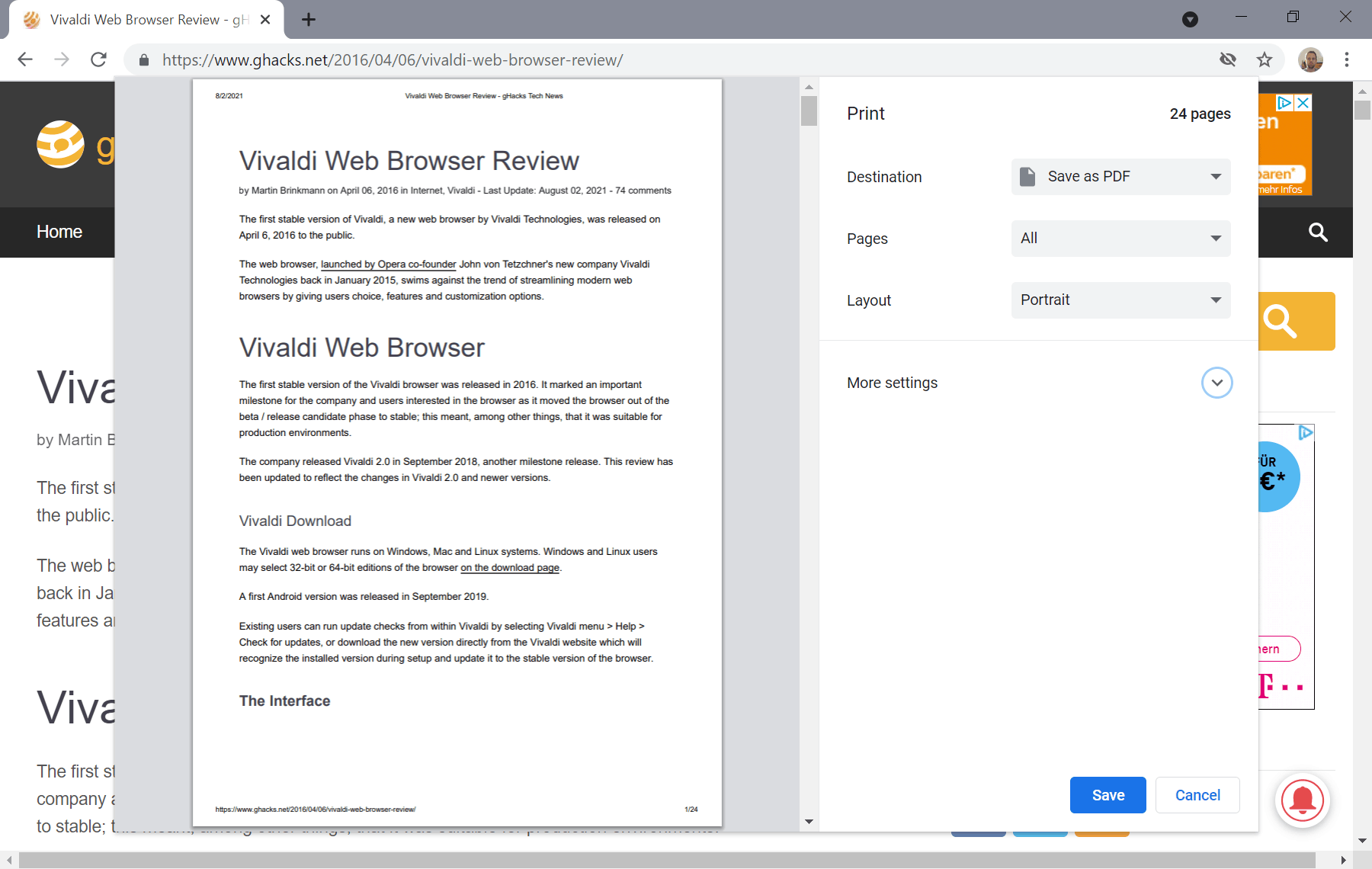- Aug 17, 2014
- 11,754
All desktop web browsers support saving webpages to various formats. The option that is most exposed comes in form of the "Save As" menu that is available in various places, usually in the main menu and in the right-click menu of the active webpage.
The PDF saving option is quite hidden in comparison and it may be difficult to discover it on your own, especially if you never use the print dialog. PDF generation is available in the print menu in the browser, and not in the "Save As" menu.
How to Save a webpage as a PDF in all browsers
The easiest option is to use the keyboard shortcut Ctrl-P to display the print dialog. The browser lists all printers and other printing options, including print to PDF there. Select the PDF option, e.g. Save as PDF in Google Chrome, and the print preview page is loaded. Just select Save again and a save dialog is displayed that you may use to name the document.
- Press Ctrl-P on the keyboard.
- Select the "Save as PDF" option under Destination.
- Select Save.
When you compare the file size of the output, you will notice differences between the browsers, especially when it comes to file size.
We compared the PDF file output of Google Chrome, Microsoft Edge, Brave and Mozilla Firefox using Wikipedia's Odyssey page and Ghacks's Vivaldi Browser Review pages. All content blockers and tracking blockers were disabled or set to the lowest level during the tests.
Here is the result:
Edge and Chrome produce almost the same result when it comes to the size of the generated PDF document. Brave came close to the size only once, and produced a larger size document the other time. Firefox generated the largest documents of the browsers.
Why is there such a discrepancy?
All browsers saved all textual information and images correctly. Images could be one reason why the size differs so much; if Firefox saves the images in a higher resolution, the output file size would be larger. If you run all documents through a PDF compression tool or service, you will notice that all sizes are reduced. For the Vivaldi review PDFs, Firefox's size dropped to about 800 KB, which is fine, as that is close enough to the file size of the PDFs generated by the other browsers. Problem is, the file sizes of these dropped to around 200 Kilobytes each, which again is quite the difference to the size of the compressed PDF generated by Firefox.
Closer inspection may reveal why Firefox PDFs are larger than those of the other three browsers that we tested.
Firefox users may use different PDF printers if installed on their devices. Windows comes with a PDF printer and the output size is a bit smaller when it is used instead of Firefox's native option. It generated a 3800 KB file of the Vivaldi article, other PDF printers may be more effective.
To answer the title's question: Chrome and Edge are the most effective when it comes to saving PDF documents in the browser, at least when you compare the four tested browsers.

Which web browser is the most efficient webpage PDF Saver? - gHacks Tech News
All web browsers support the saving of webpages as PDF documents, but which is the most efficient when it comes to saving PDF?